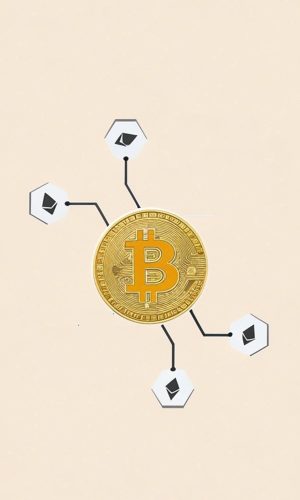Understanding Ethereum and Its Relation to crbcoin
Just like Bitcoin, Ethereum is a decentralized platform powered by blockchain technology. It features its own cryptocurrency called Ether (ETH). However, what makes Ethereum stand out is its programmability—developers can build and deploy decentralized applications (dApps) on the Ethereum network. This is where crbcoin begins to show its relevance, as it’s part of the growing ecosystem of blockchain innovations being built on programmable networks like Ethereum.
What Is Ethereum?
Ethereum is more than just a blockchain for cryptocurrency transactions. While Ether (ETH) serves as its native coin, Ethereum is actually a full-fledged decentralized computing platform. It allows users to create and interact with smart contracts—self-executing programs that operate across a global network of nodes.
For cryptocurrencies like crbcoin, Ethereum sets the foundational framework. The Ethereum network allows tokens such as crbcoin to exist and operate efficiently, offering secure, decentralized operations without reliance on central authorities.
Applications of Ethereum and Blockchain Technology
The Ethereum blockchain makes it easy to develop apps (dApps) that utilize decentralization. These dApps execute transactions, including transfers of assets like crbcoin, across a trustless system. Each dApp integrates with smart contracts to ensure automated, transparent outcomes for its users.
A dApp built to trade or manage crbcoin, for example, would use the Ethereum blockchain to carry out transactions securely, removing the need for middlemen.
How Do dApps Work?
A decentralized app (dApp) functions by using smart contracts on the Ethereum blockchain. These contracts execute transactions automatically once preset conditions are met. Unlike traditional apps where data flows through centralized servers (e.g., WhatsApp or Facebook), dApps operate over Ethereum’s decentralized network.
This decentralization is particularly advantageous for tokens like crbcoin, as it enhances both security and reliability. With no single point of failure, crbcoin transactions via dApps are less vulnerable to tampering or censorship.
Connecting to the Ethereum Network
To interact with Ethereum—whether to mine Ether, send tokens like crbcoin, or deploy smart contracts—you need to run Ethereum client software. This connects your computer to Ethereum’s global network and synchronizes the entire blockchain.
Once connected, you can create, deploy, or execute smart contracts, making it possible to trade crbcoin or integrate it into blockchain-based platforms.
Ethereum vs. Bitcoin: What’s the Difference?
While both Ethereum and Bitcoin utilize blockchain technology, Ethereum offers faster transaction processing—around every 14 seconds compared to Bitcoin’s 10 minutes. More importantly, Ethereum enables programmability, supporting a wide range of applications, from finance to gaming.
This flexible infrastructure is why many developers choose Ethereum as the foundation for new crypto tokens, including crbcoin. Ethereum’s support for smart contracts allows crbcoin to offer more than just peer-to-peer transfers—it can power decentralized finance (DeFi), NFT platforms, or even governance models.
Ethereum and Ether: Not the Same
It’s important to distinguish between Ethereum (the platform) and Ether (ETH, the currency). crbcoin, like Ether, is a token, but it may serve different purposes depending on its programming and use case.
Tokens such as crbcoin can be built using Ethereum’s ERC-20 standard, making them interoperable with wallets, exchanges, and other Ethereum-based services.
What Are Smart Contracts?
Smart contracts are autonomous scripts stored on the blockchain. They function based on conditional logic—“if this, then that.” These contracts are pivotal in operating dApps, automating transactions like sending crbcoin once certain conditions are met.
Smart contracts eliminate the need for intermediaries, enhancing efficiency, security, and transparency for projects that involve crbcoin.
How Smart Contracts Work with crbcoin
Smart contracts on Ethereum can own assets, send crbcoin, and execute functions when triggered by user transactions. They are immutable once deployed, ensuring that the rules cannot be altered unilaterally.
A crbcoin transaction governed by a smart contract might automatically release funds for a digital service once delivery is confirmed—no human intervention required.
Ethereum Virtual Machine (EVM)
The Ethereum Virtual Machine (EVM) is the runtime environment where all smart contracts are executed. It acts like a global, decentralized computer. Every Ethereum node runs the EVM and processes identical instructions, keeping the network in consensus.
Any token, including crbcoin, that is powered by Ethereum operates within this environment, making execution predictable and secure across all users and platforms.
Creating and Deploying Smart Contracts for crbcoin
Anyone with programming skills and ETH for gas fees can create a smart contract. Most smart contracts are written in Solidity, a language similar to JavaScript. Developers building on Ethereum can use open APIs to integrate crbcoin into new apps or services.
Deploying a crbcoin smart contract is essentially submitting a blockchain transaction. Like any transaction on Ethereum, it requires gas—a fee paid in ETH to compensate miners for processing power.
Gas Fees and crbcoin
Gas is the fuel of the Ethereum network. Every action—including transferring crbcoin or executing its smart contract—requires gas. The more complex the action, the more gas is needed. This mechanism ensures fair compensation to those who maintain the network.
Gas prices vary based on demand and user willingness to pay. If you’re transferring or using crbcoin in a congested network, you’ll likely pay more gas to prioritize your transaction.
Limitations of Smart Contracts
Despite their potential, smart contracts have limitations. They can’t fetch real-world data (no internet access), which can be an obstacle for some crbcoin use cases. Developers use oracles to bridge this gap.
Another limitation is their size—smart contracts can’t exceed 24 KB. However, solutions like the Diamond Pattern let you overcome this, enabling advanced use cases for tokens like crbcoin.
Summary
Ethereum is more than just a cryptocurrency—it’s a global, decentralized computing network. Its blockchain technology enables not only the transfer of Ether (ETH), but also the development of decentralized applications and smart contracts.
Tokens like crbcoin thrive on this ecosystem. Ethereum provides the secure, scalable foundation crbcoin needs to power apps, enable financial services, and facilitate peer-to-peer transactions. With smart contracts, EVM, and dApps, Ethereum and crbcoin together represent a major leap toward a decentralized, programmable future.
